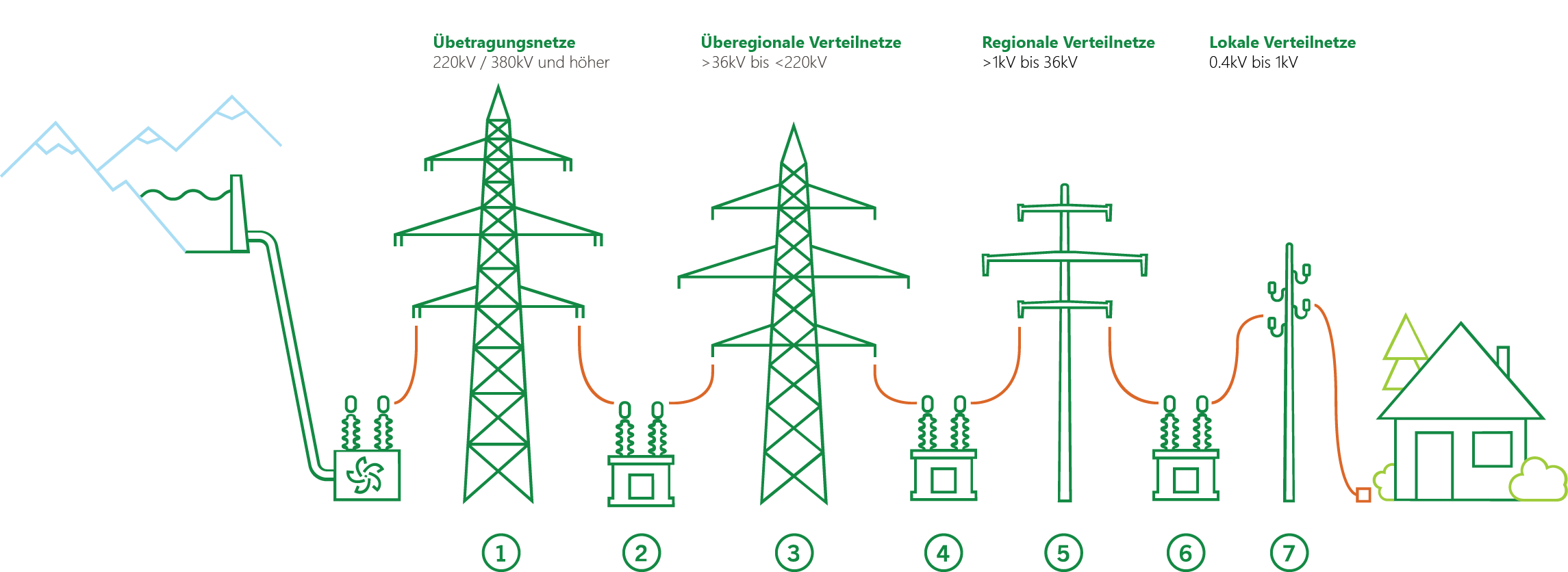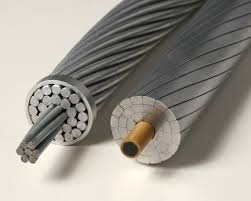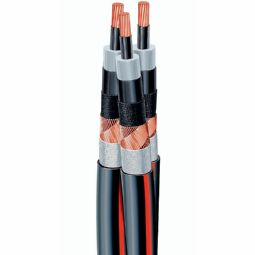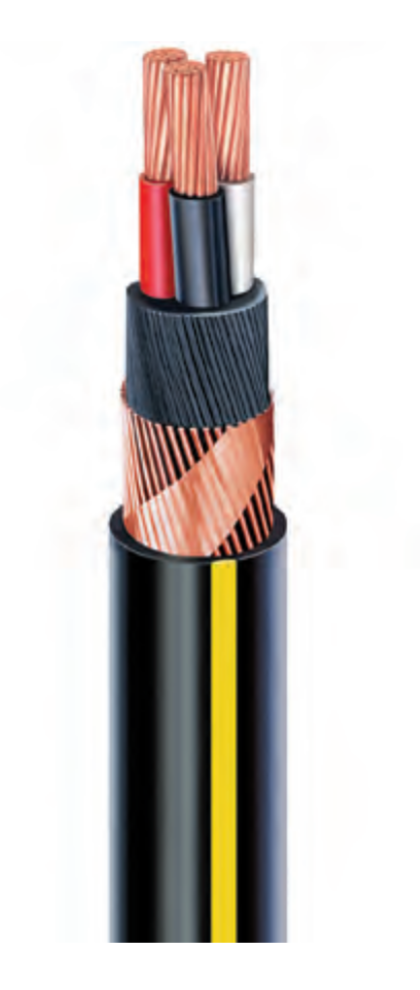In the field of power supply, the lines are divided into overhead lines (conductor cables) and laid cables.
In Electricity, the classic top-down structures from production to consumer are depicted. Categorization takes place only in the voltage levels. Only in the low-voltage range there is an additional breakdown by function. The voltage/network levels were introduced as an outline analogous to the graphic.

Network levels (Source: Swissgrid)
The various lines are additionally divided into three categories in addition to voltage levels:
•Cables (underground cables)
oDesignated as Cable (EHVLine, HVLine, MVLine, LVLine, LightingLine, DCLine)
•Conducters (overhead lines)
oDesignated as OverheadLine (EHVLine, HVLine, MVLine, LVLine, LightingLine, DCLine)
•Interior of installations
A conductor is used to transport electricity with an overhead line. This is the most cost-effective way to transport electricity from A to B. As a rule, conductors are made of copper or aluminum. The cost and specific gravity are lower for aluminum, but the conductivity is worse than for copper. Conductor cables do not have an insulating sheath. For this reason, safety distances are mandatory (due to short-circuits).

Cables laid underground and in buildings always have insulation layers:
High voltage cable |
For voltages above 30 kV phases are usually separated as single cables. |
|
Medium voltage cable |
Are used both in phases separately and in three phases. |
|
Low voltage cable |
Are usually installed in three phases. But there are also versions in one phase. |
|


